LAB and Facilities
CARPENTRY
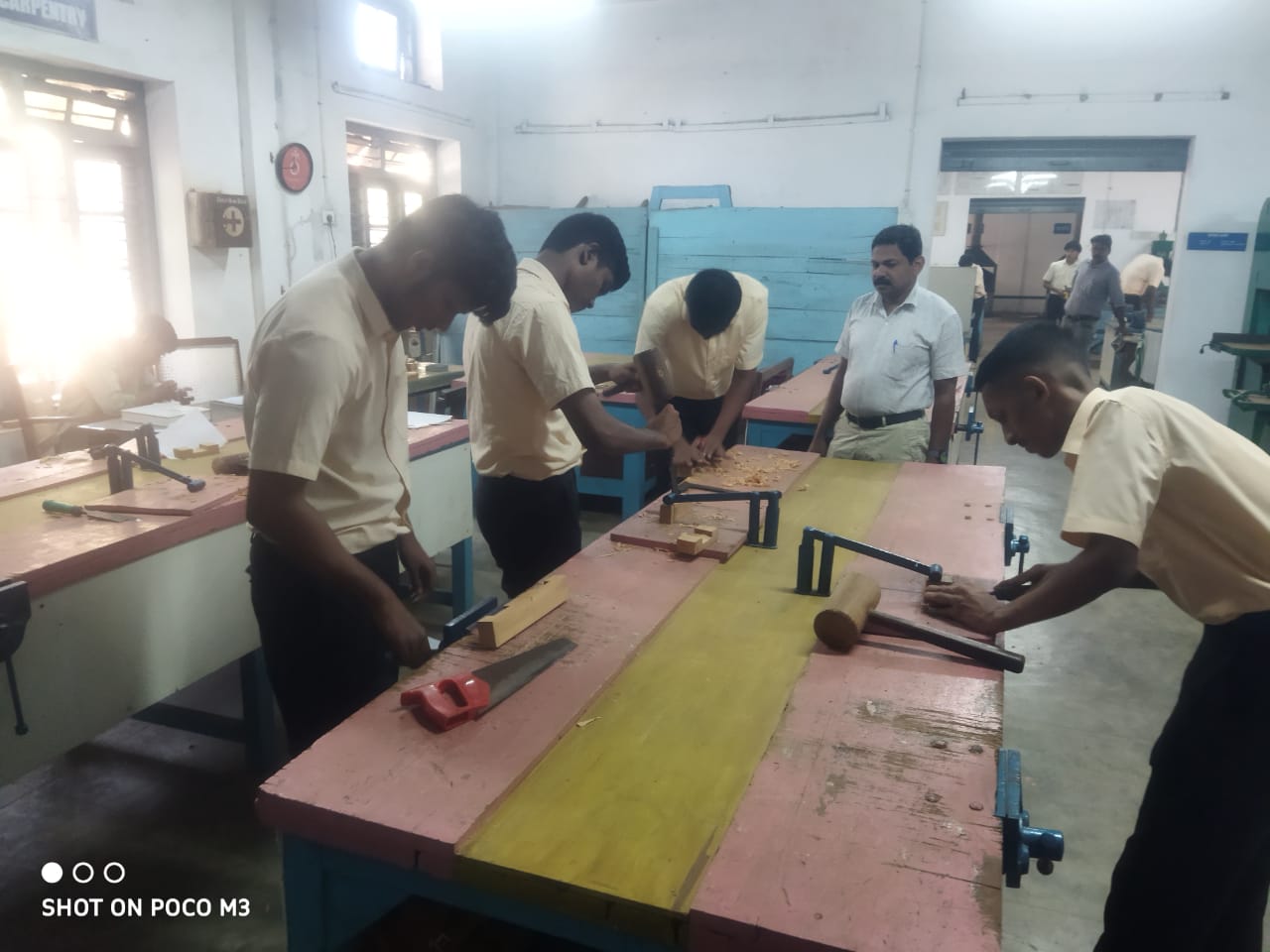 Carpentry involves cutting, shaping and fastening together to produce a finished product.Preparation of joints is one of the important operations in wood work. Joinery denotes connecting the wooden parts using different points such as lap joints, mortise and T- joints, bridle joints, etc
Carpentry involves cutting, shaping and fastening together to produce a finished product.Preparation of joints is one of the important operations in wood work. Joinery denotes connecting the wooden parts using different points such as lap joints, mortise and T- joints, bridle joints, etc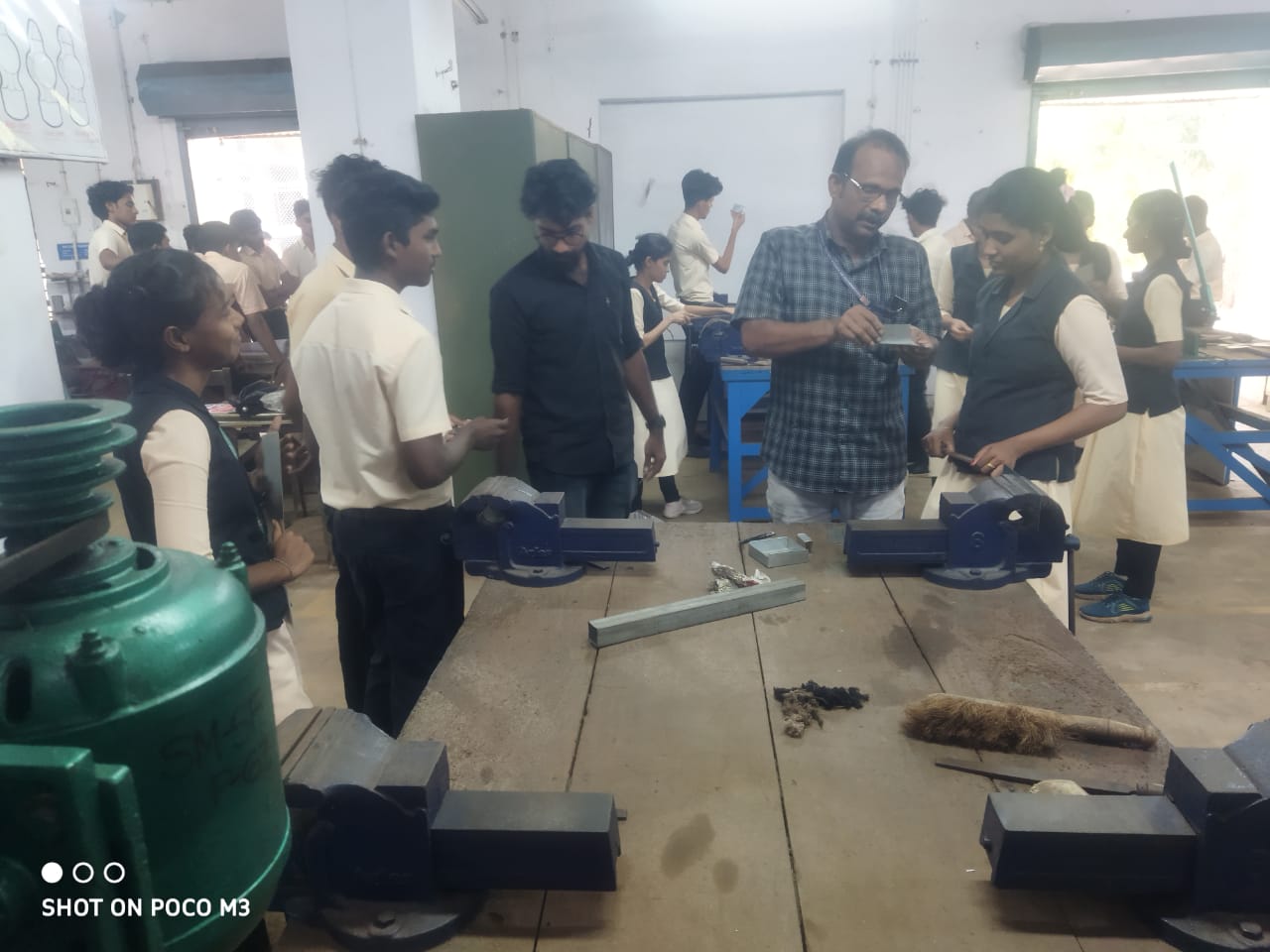 It requires a through knowledge of projective geometry of surfaces, because the laying out of pattern and cutting of metal sheets to correct sizes and shapes entirely depends upon the knowledge of the workman.
It requires a through knowledge of projective geometry of surfaces, because the laying out of pattern and cutting of metal sheets to correct sizes and shapes entirely depends upon the knowledge of the workman.WELDING
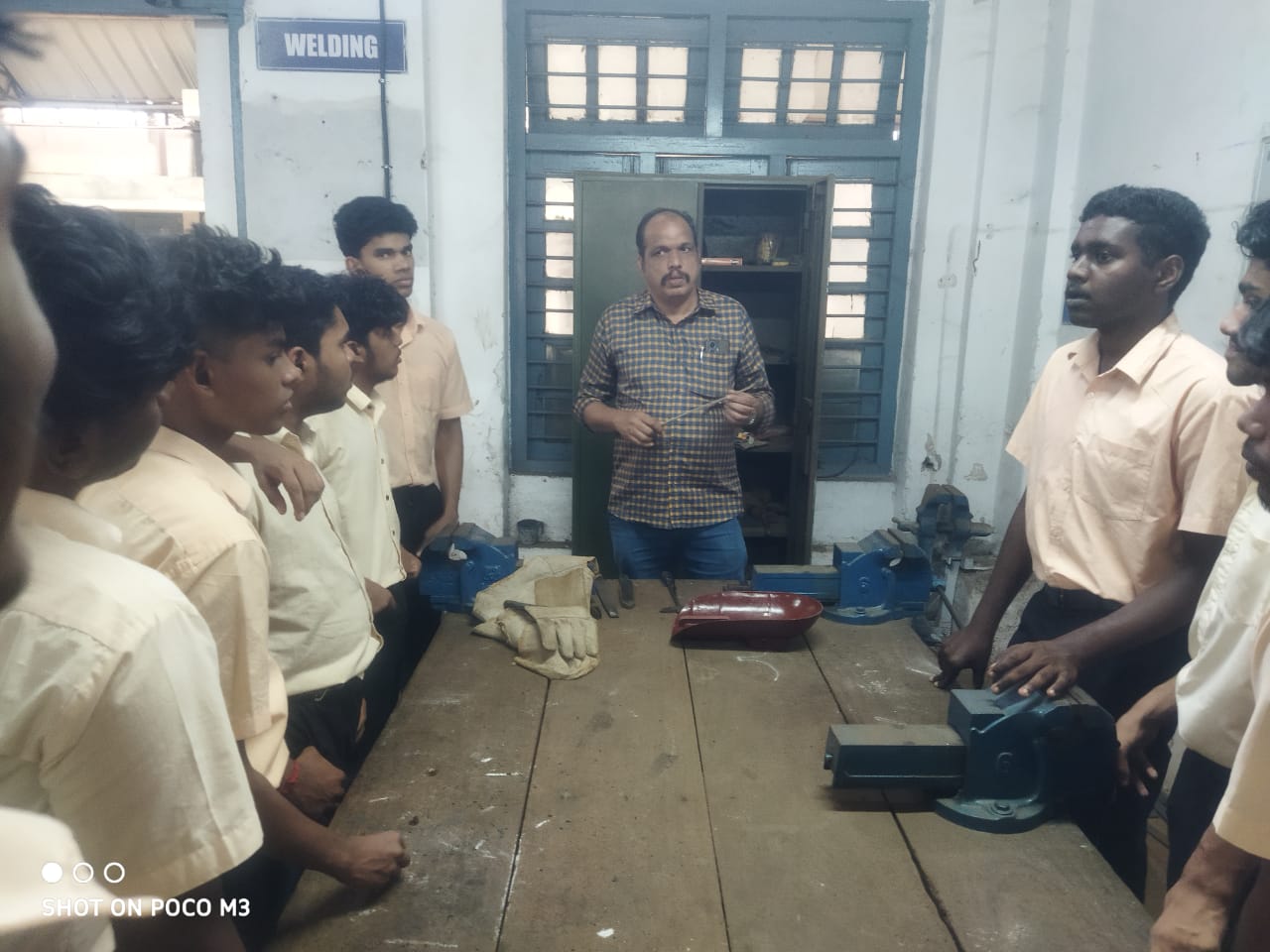 The completed welded joint may be referred to as a weldment. A heat source such as an electric arc, a flame, pressure, or friction. The most common heat source is an electric arc. An arc is the physical gap between the end of the electrode and the base metal. The physical gap causes heat due to resistance of current flow and arc rays. The arc melts the metals to create the joint.
The completed welded joint may be referred to as a weldment. A heat source such as an electric arc, a flame, pressure, or friction. The most common heat source is an electric arc. An arc is the physical gap between the end of the electrode and the base metal. The physical gap causes heat due to resistance of current flow and arc rays. The arc melts the metals to create the joint.MACHINE SHOP
A machine shop is a facility with equipment and supplies for machining, a process where parts are cut, fabricated, and finished to prepare them for use.
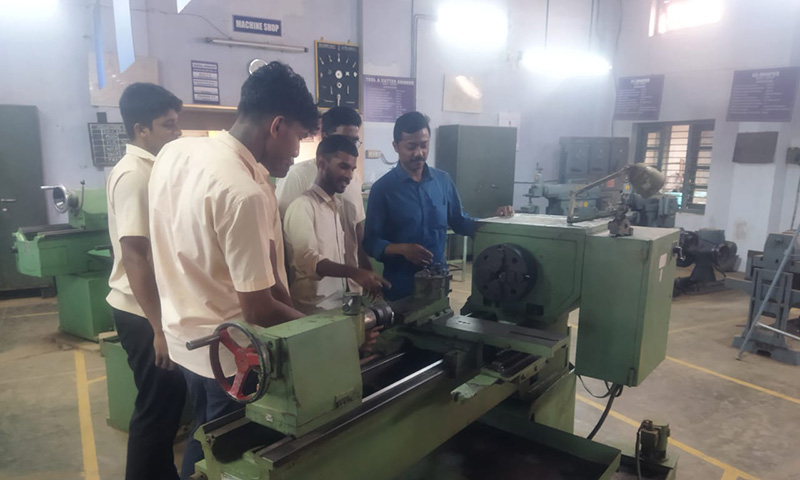 Machine shops are used in the creation of new parts, as well as personnel may have specialized training, depending on the type of work done at the shop, as some machining tasks require a unique skill set, as well as a deep understanding of the kind of work the finished parts will be used for.
Machine shops are used in the creation of new parts, as well as personnel may have specialized training, depending on the type of work done at the shop, as some machining tasks require a unique skill set, as well as a deep understanding of the kind of work the finished parts will be used for.FITTING SHOP
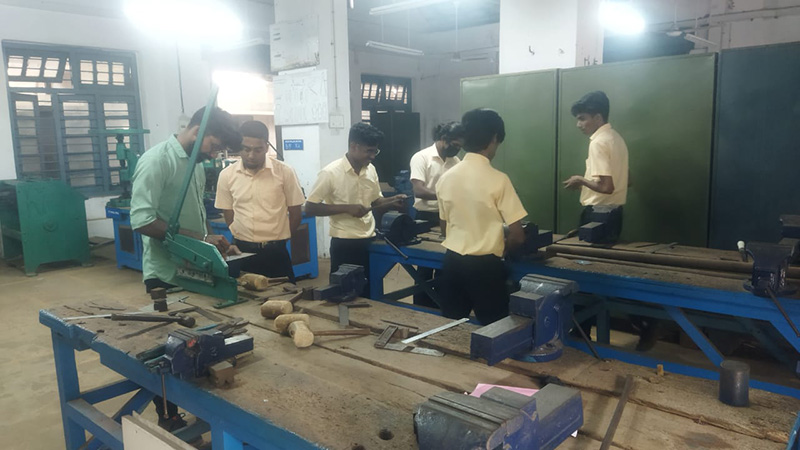
Fitting Shop involves a large number of hand operations to finish the work to desired shape, size and accuracy. The various operations performed are marking, chipping, sawing, filing, scraping, drilling, tap (Internal threading) and die (External threading).
FORGING
Forging is also referred as smithy when the shaping of small jobs is carried out at small scale by manual hammering and heating the workpiece in an open fire or hearth.
FOUNDRY
A foundry workshop in which casting of metal is done. Metals are cast into shapes by melting them into a liquid, pouring the metal into a mold, and removing the mold material after the metal has solidified as it cools. In this process, parts of desired shapes and sizes can be formed. Some of the commonly used tools in foundry shop for molding process are shovel, trowel, riddle, rammer, draw spike, swab, vent wire and slick tool.
Foundry processes can be divided into two types:-
- Ferrous foundries
- Non-ferrous foundries
Foundry processes involve making the mold and the core, melting and pouring the metal into the mold, and finally removing the mold and core and finishing the product.

